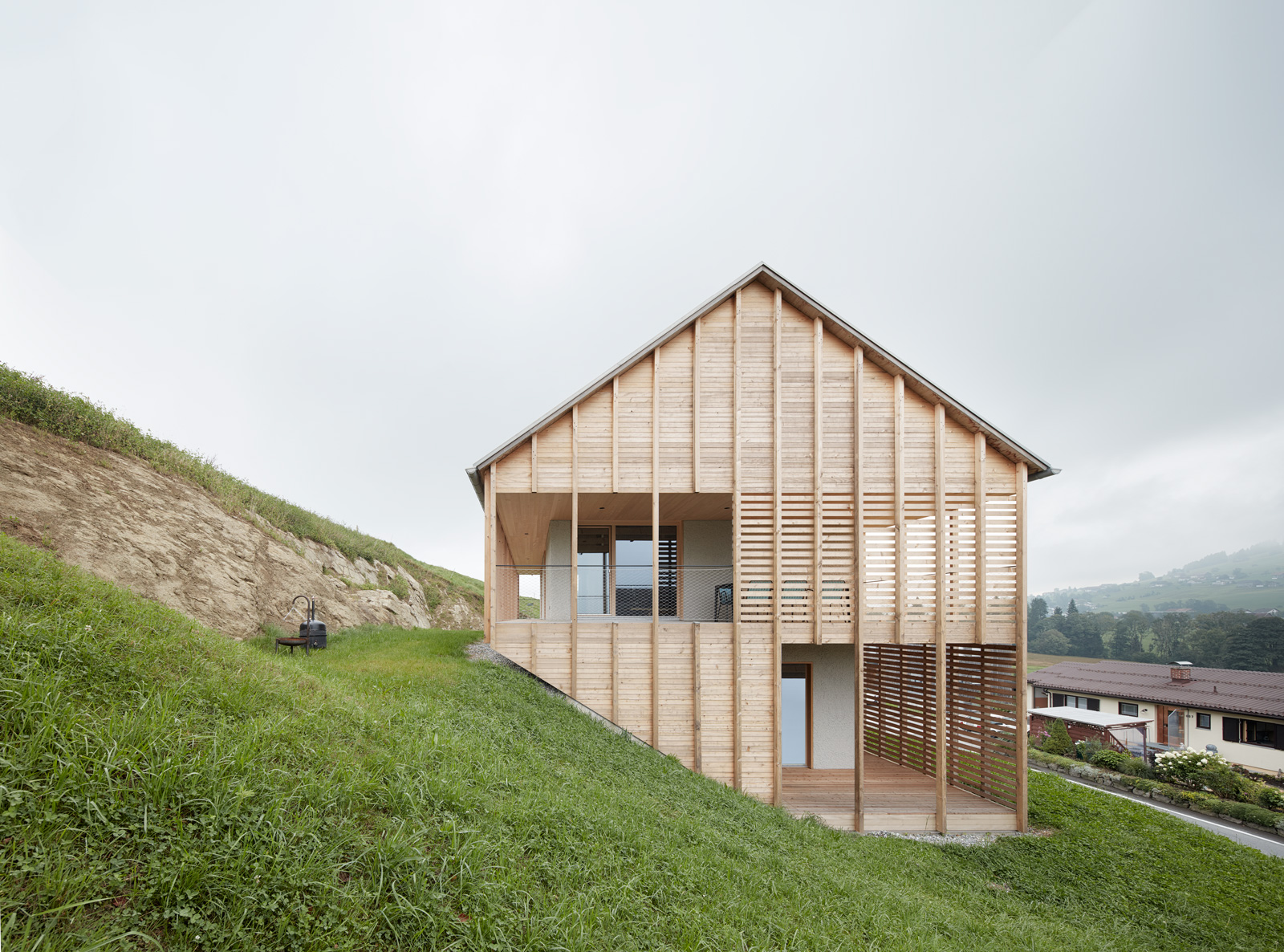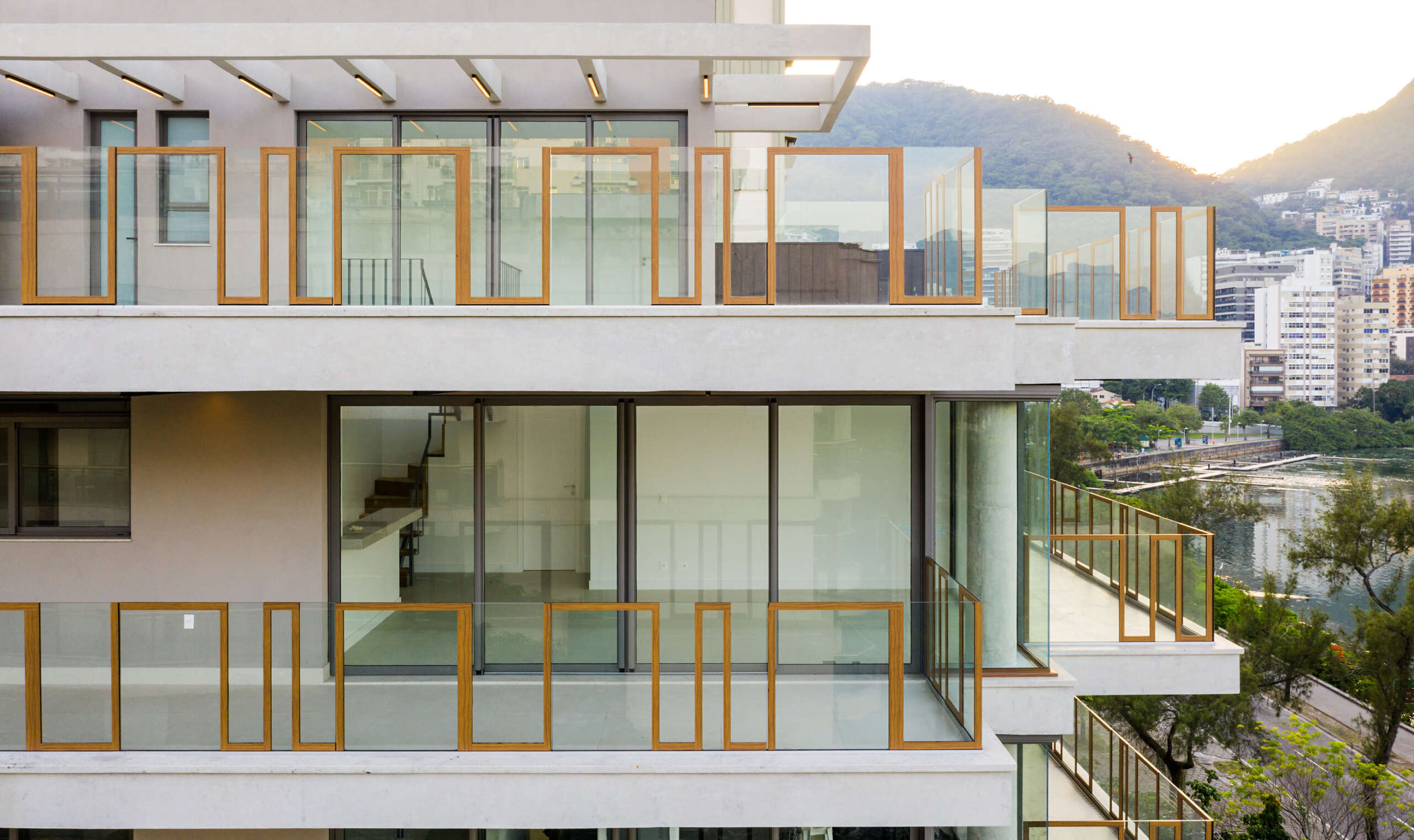Aotearoa, New Zealand
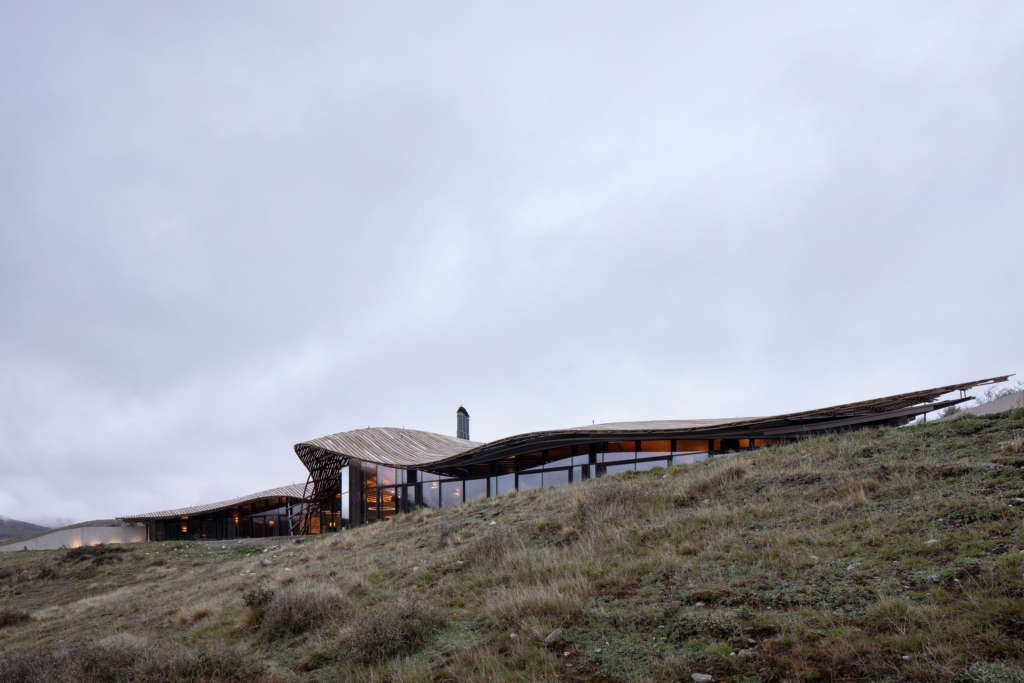
The following description is courtesy of the Architecture Workshop
Proposition
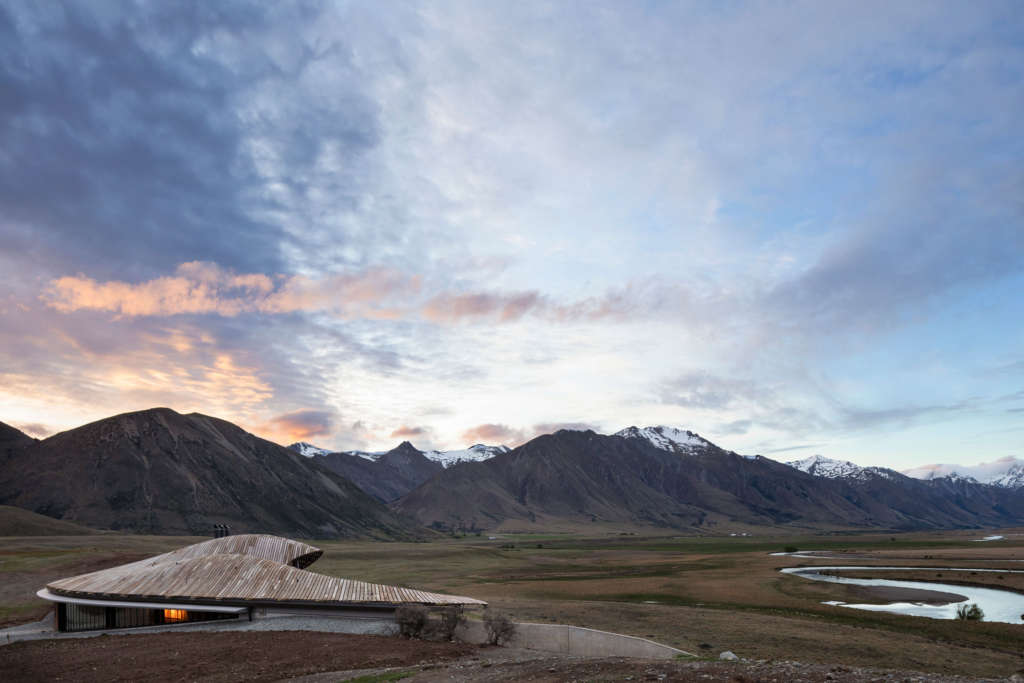
The built object in the landscape has long been a challenge for New Zealand architecture particularly amongst the beautiful scenic backdrops of Aotearoa NZ. On this remote site, where architecture’s neighbour is ecology and geology rather than built environment, how might we address the problem of the isolated building? The Architect’s strategy for a five-bedroom luxury lodge in a remote glacial valley in the NZ Southern Alps explores this question.
Inspiration
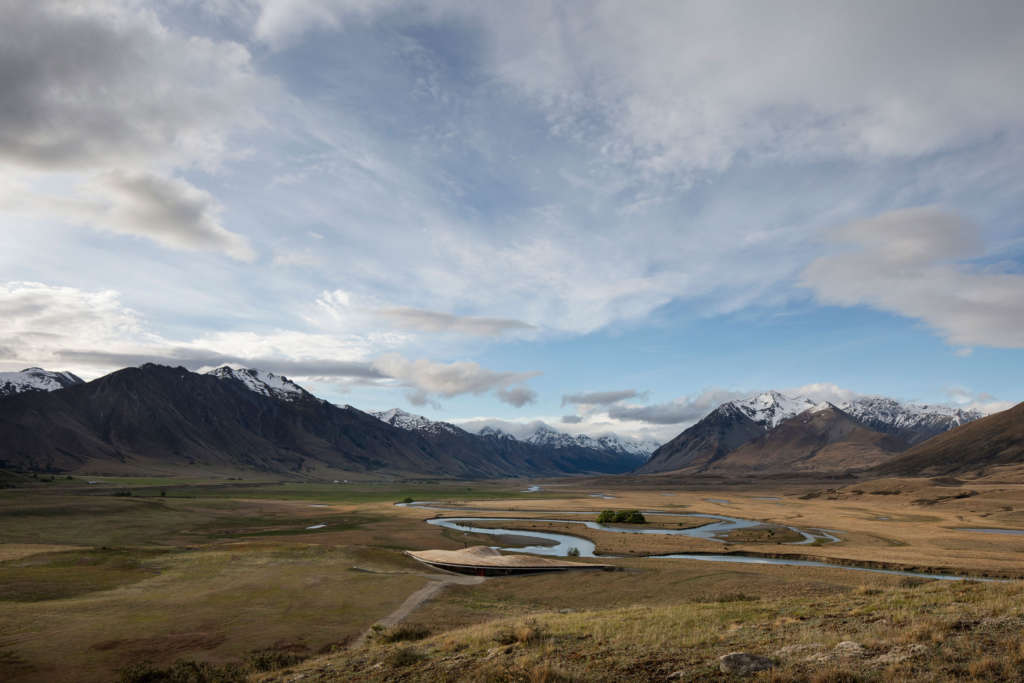
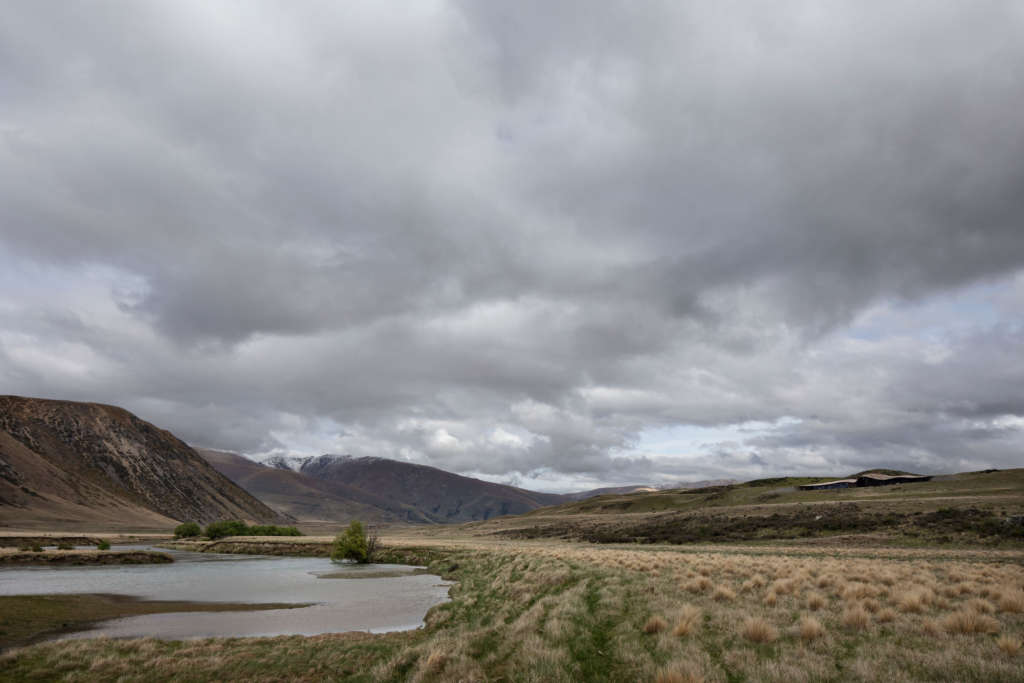
The architecture draws inspiration from the imposing grandeur of the vastly scaled glacial landscape and the weaving folded moraine across the valley that ensued – remnant topography from the glacial retreat 10,000 years ago. The strategy is to bind the building with the land- to make it an attribute of the site. Topography is the common ground for the disciplines of landscape and architecture and for their contribution to contemporary culture. The lodge effectively forms a new ground; a constructed topography that adds a further fold within the continuity of the existing glacial moraine.
Visitor Experience
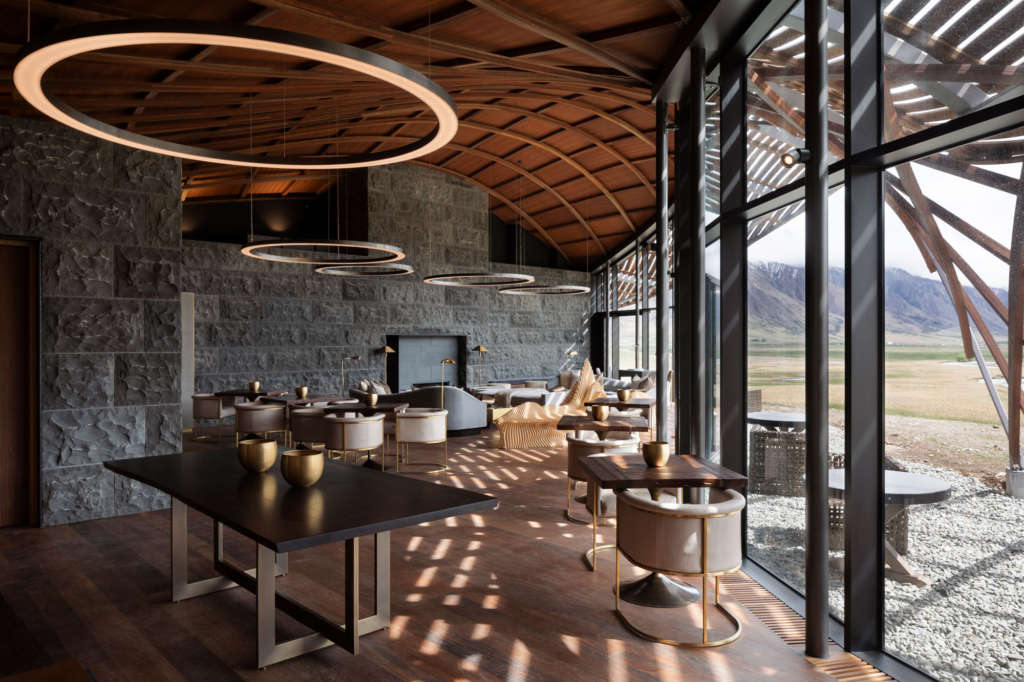
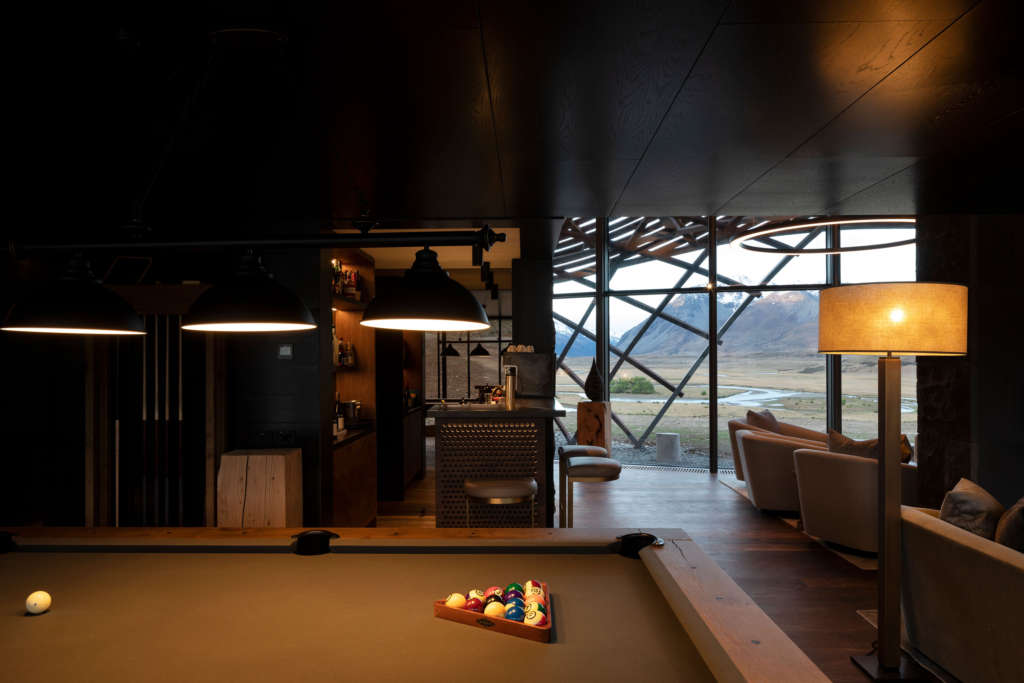
Gottfried Semper’s (1803 -1879) identifies light and heavy elements of which the hearth is primary. In the Lindis Lodge the visitor experience is encompassed between these two layers; the excavated and embedded new ground in the moraine beneath intimate low black ceilings and the other light and woven, a soaring timber lamella perched on the riverside edge that hovers above to protect and most strikingly forms a new, and picturesque topography. Here the fragility and exposure of the solitary human figure within such physical and temporal vastness is in turn protected by the enveloping roof and the firelight flickering in the hearth, as in a high country musterer’s hut.
Sustainability
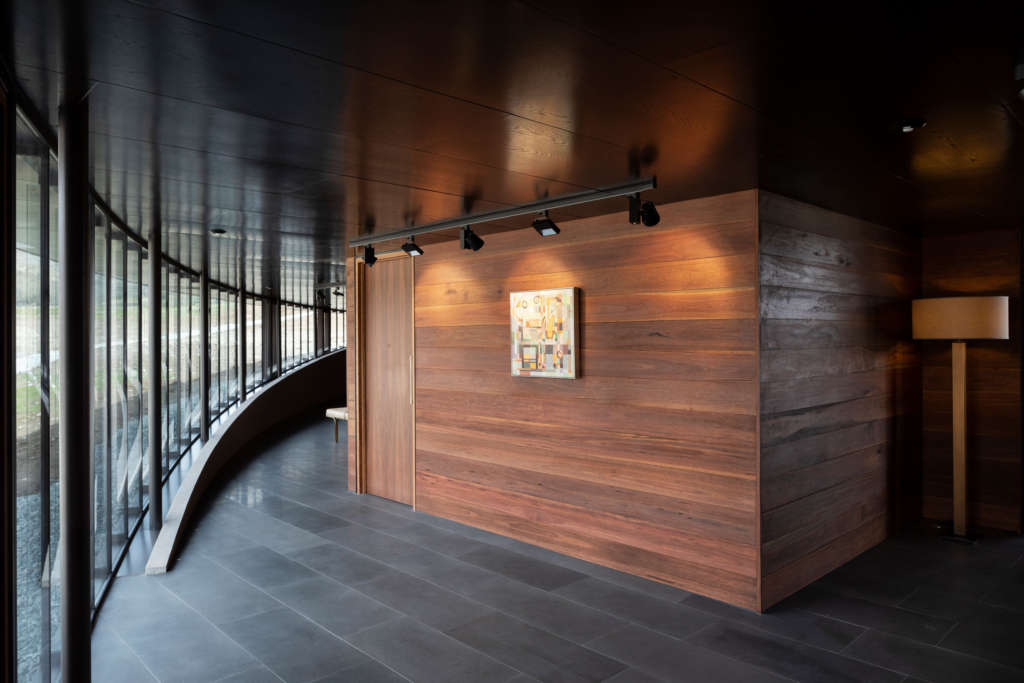
The site is exposed to an extreme climate ranging from 35C plus in summer to minus 16C in winter with regular severe winds. The remote location is served by a fragile single-phase power supply. A backup generator is provided in the buried Energy Shed. The building is provided with a hydronic underfloor heating system, laid directly under-engineered timber flooring to allow for a quick response. Heating and domestic hot water is provided by a geothermal heat pump system complete with a 25x12m X3m large ground source collector field. Efficient LPG gas condensing boilers provide backup when needed. Gas fireplaces provide further comfort and atmosphere. Potable water is filtered from the on-site bore and rainwater harvesting system and black and grey water systems discharge to the biodegradable on-site sewage treatment plant. The large overhanging roof incorporates an airtight membrane within the layer of R6.0 insulation. The two facades include low E double glazing with an R-value of 0.9 and thermally broken window frames on the riverside. Heat recovery ventilators provide fresh air and extract air ventilation. Ductwork behind the split stone chimney breast recirculates the heated air in the 6.2 m high Great Hall.
Construction
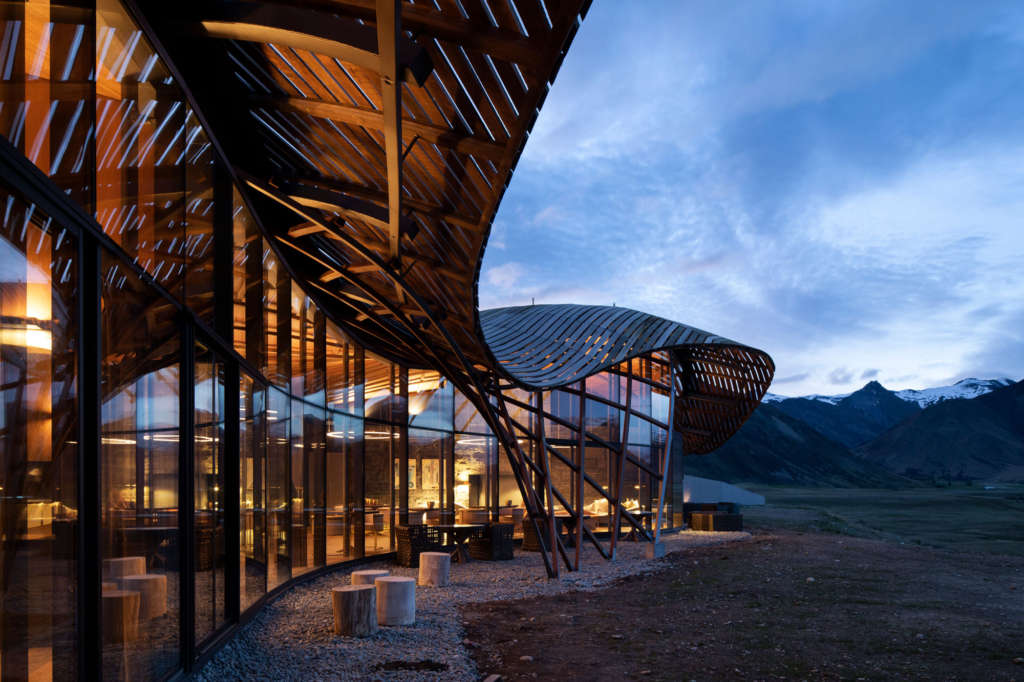
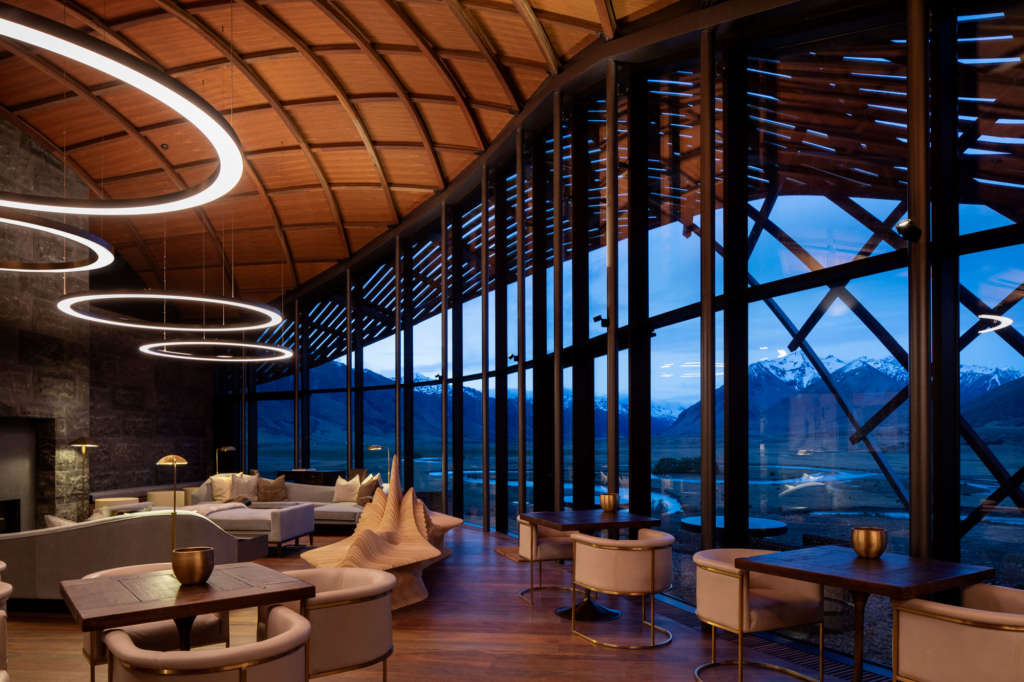
The detail construction layers of the parametric roof contours, summarised by the axonometric diagram, are the result of an established close collaboration between architect and structural engineer. A full-scale prototype piece was built which lead to the invention of ‘screw laminated’ fabrication for the Spotted Gum hardwood lamella enabling a cost-effective on-site assembly of the complex gridshell roof.
General Information
Project name: Lindis Lodge
Architecture Firm: Architecture Workshop
Website: https://architectureworkshop.co.nz/
Contact e-mail: workshop@architectureworkshop.co.nz
Architecture Firm Instagram: archwksp
Completion Year: 2018
Gross Built Area: 670m2
Project location: Ahuriri Valley, Waitaki, South Island, New Zealand
Project Credits
Architect Team: Christopher Kelly, Jesse Matthews, Hamish McLachlan, Sam Ellis, Alistair Cattanach
Clients: The Lindis Group
Engineering: Dunning Thornton Consultants
Landscape: Architecture Workshop
Consultants: eCubed (Services and ESD engineer)
Collaborators: Brosnan Construction
Photo credits: Patrick Reynolds


